If you’re struggling with common warehouse management challenges like inventory tracking accuracy, redundant processes and time management, warehouse management software is the ideal solution that you’ve been looking for.
In this article, you’ll learn about the benefits of warehouse management systems as well as which warehouse software represents the best option for your business. We’ve taken the time to try out and review all of the most popular warehouse management systems on the market today and compare them so that you can easily identify the best software solution for companies like yours.
Our Pick For Best Warehouse Management Software: NetSuite
Table of Contents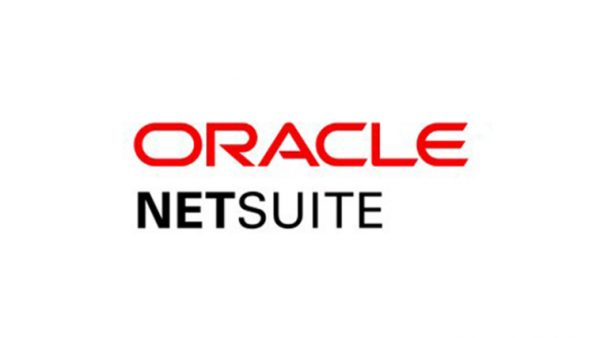
As a cloud-based warehouse management system, NetSuite combines a host of features in one easy-to-use solution. Its suite of innovative tools combines cash flow, financial, inventory, payroll, and much more into a single tool, giving users full control over their business.
SuiteCommerce is part of this suite of tools, representing a single solution that supports both B2B and B2C eCommerce for complete convenience. From features that allow multiple channel order management to those that allow for inventory visibility in real-time, NetSuite offers a holistic approach to eCommerce management.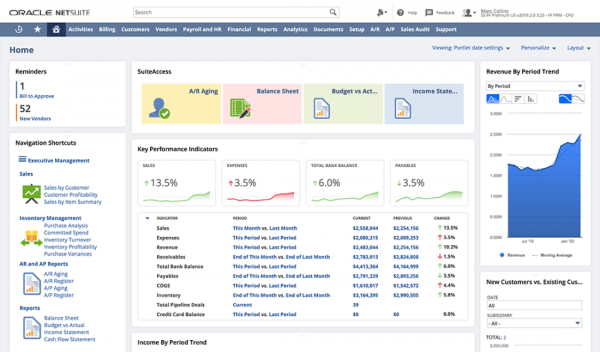
NetSuite users can even create their own landing pages, publish fresh content, and launch promotions, while user-friendly drag-and-drop tools enable content to be managed and pages to be edited quickly and effortlessly.
As an added bonus, NetSuite is also highly scalable, allowing for extensibility alongside effortless upgrades and simple deployment. With automatic updates and new features appearing with each release, your site will always stay up to date with the most cutting-edge technology.
Pros:
Cons:
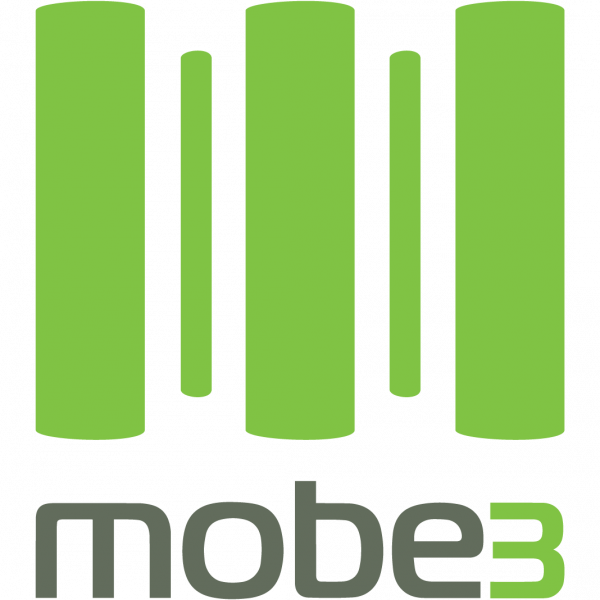
Structuring the layout of your warehouse and amplifying direct picking routes is a breeze with Mobe3 WMS. With its SmartBarcode scanning, manual errors are eliminated, and the efficiency and productivity of your warehouse workers are boosted.
Mobe3 WMS software is simple to implement as well as speedy to get to grips with. With its user-friendly, easily-navigable interface, it’s a highly usable solution.
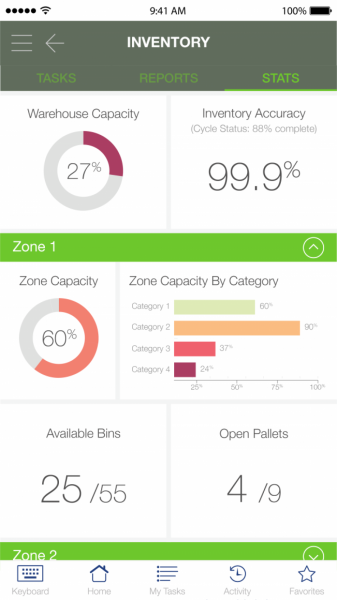
Configurable and flexible, this tool integrates effortlessly with ERPs and other systems such as MES, TMS, and weight scales. This makes it a convenient option for use in any distribution center.
Helping you to maintain inventory accuracy at all times, Mobe3 WMS is a cost-effective logistics solution.
Pros:
Cons:
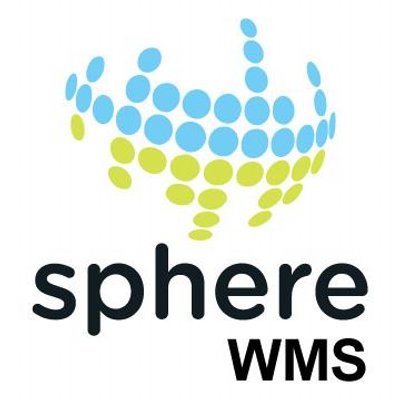
If you are looking for an easy way to gain better visibility, efficiency, and control over your warehouse floor operations, Sphere WMS is a great choice. It offers every feature you could need to boost your business’s productivity thanks to real-time reports and web visibility, wireless scanning of barcodes, an iOS application, and flexible customization.
Sphere WMS also scores well in terms of integrations. Many 3rd-party connector options are available including online shopping carts and popular eCommerce sites like Amazon, Etsy, PayPal, and WooCommerce among others.
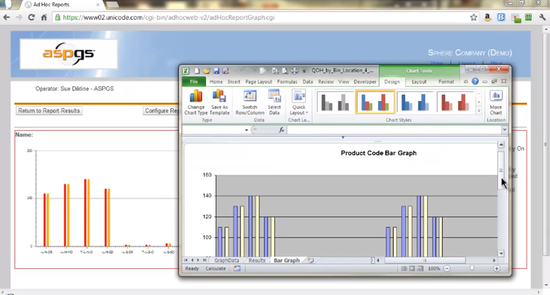
Prices for Sphere WMS are flexible, so you can find options that best meet your needs. There is also a free demonstration available so you can determine if it’s the right choice of software for you before you buy.
Although Sphere WMS is one of the more complex warehouse management tools, its advanced features make this a highly detailed system for in-depth real-time inventory control.
Pros
Cons

When you need a full WMS equipped with purchasing and inbound, shipping management and outbound, building blocks, inventory control, customized reports, dashboards, stock control, customer portals, and shipment tracking in real-time, Infoplus is the one for you.
Infoplus is an efficient and versatile software solution that offers integrations with more than 120 carriers, carts, and more including big names like Walmart Marketplace, Etsy, and Amazon Seller Central. With its impressive array of features, it offers excellent value for money.
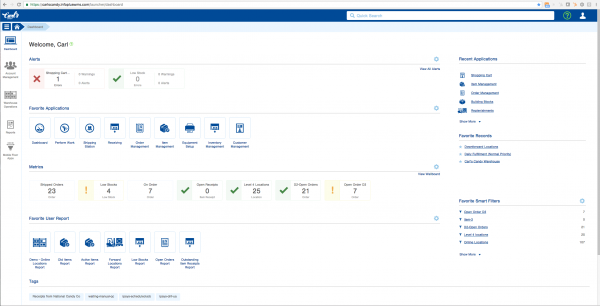
One of the best features of Infoplus is its flexible price plans. If you’re running a small business or a new start-up, it offers low-cost options that are highly affordable.
Infoplus’s pricing scheme is also very transparent so you can easily make a well-informed purchasing decision.
Pros:
Cons:
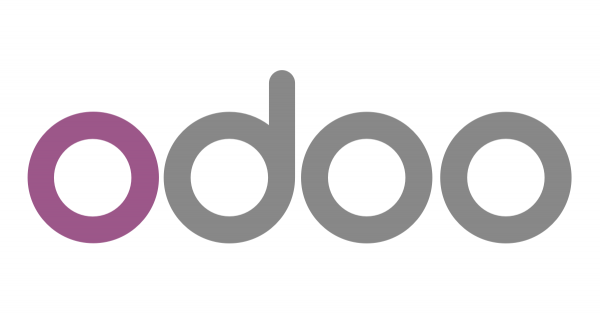
If you’re running a business on a budget, you’ll be hard-pressed to find a more affordable and budget-conscious option for warehouse inventory management than Odoo.
This software allows one app to be used completely free of charge, and adding on a second app only costs a modest sum. As a result, this system offers great value for money.
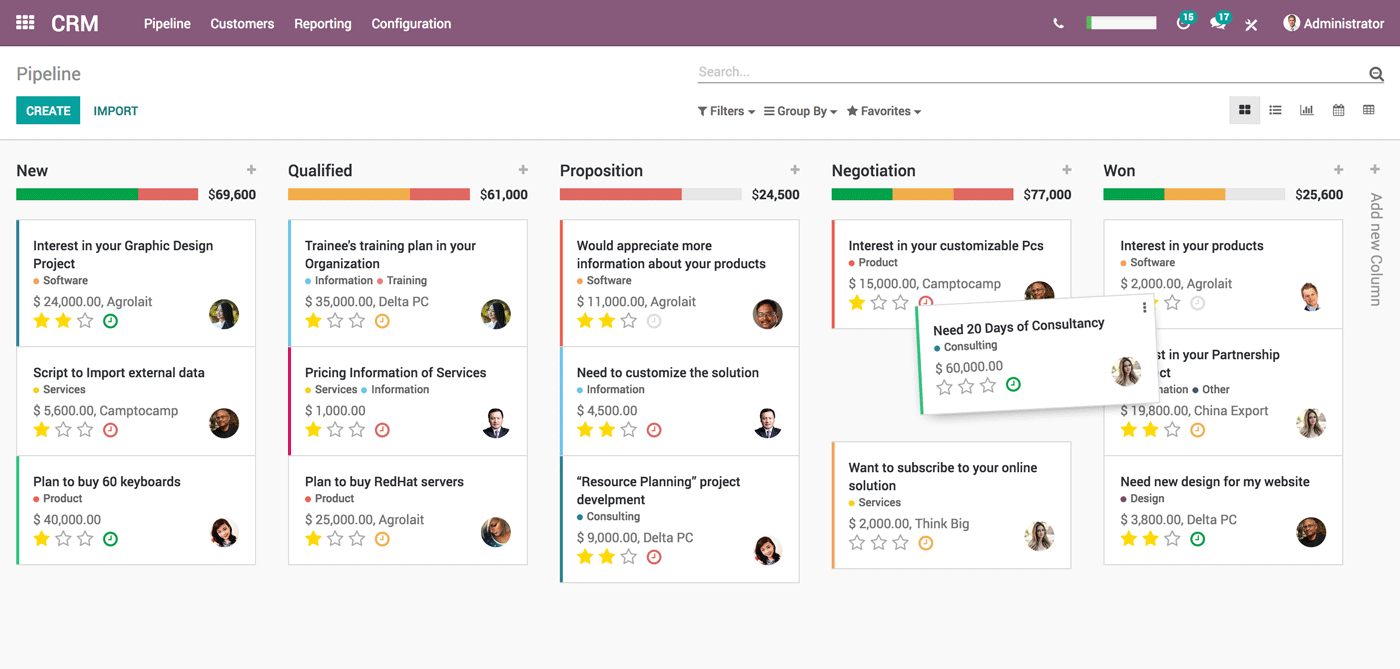
This series of sales and warehouse solutions cover everything from productivity tools and operations to sales and websites. The software utilizes automated RFQs and order points so the supply chain can be automatically replenished effortlessly.
Odoo offers its own full suite of 1st party apps and software to make life easy and convenient for users. However, for those who wish, it’s possible to connect third-party integrations via Zapier.
Pros
Cons
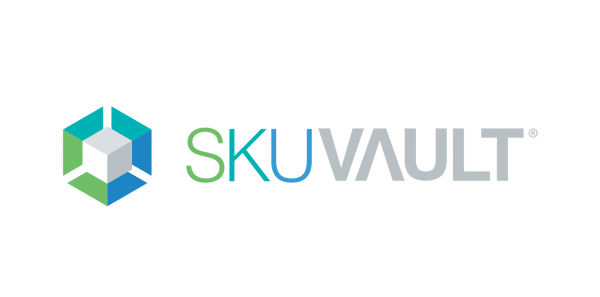
This inventory management software is cloud-based and is designed specifically for multi-channel and eCommerce merchants. Dealing with physical and actual inventory as it is scanned in and out of the store or warehouse, SkuVault uses the real-time data in order to sync with online marketplaces like eBay, Amazon, Shopify, and Magento.
As SkuVault syncs with quantities in real-time, out of stocks is prevented, and shipping, picking, and packing errors are significantly reduced. Meanwhile, the smart reordering reports ensure purchasing decisions can be backed up by actual data.
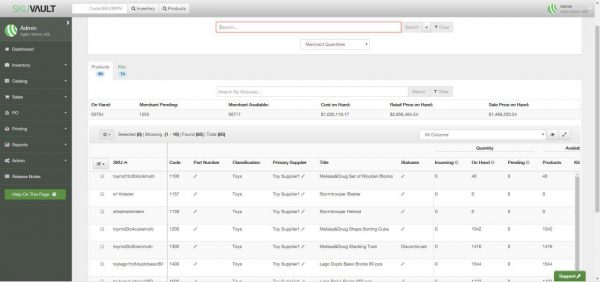
SkuVault can increase efficiency while improving your business’s bottom line. Evidence shows that users can decrease out of stocks by as much as ten times, labor costs can be reduced by up to 30%, and fulfillment times can be slashed by as much as 87%.
Even better, SkuVault especially excels in the field of integrations. Options for integration include big-name eCommerce brands like eBay, Amazon, Etsy, Magento, and Shopify among others.
Pros
Cons

Whether you’re running a global corporation or a single small-scale distribution center, IRMS360 is the ideal cloud-based warehouse management system for your needs.
Providing impressive control and visibility of all your operations, IRMS360 enables you to maximize your available space and resources, aiding with fulfillment. This software offers a full 360-degree viewpoint over the supply chain with performance dashboards providing visibility in real-time of products, processes, and people as they move through your warehouse floor.
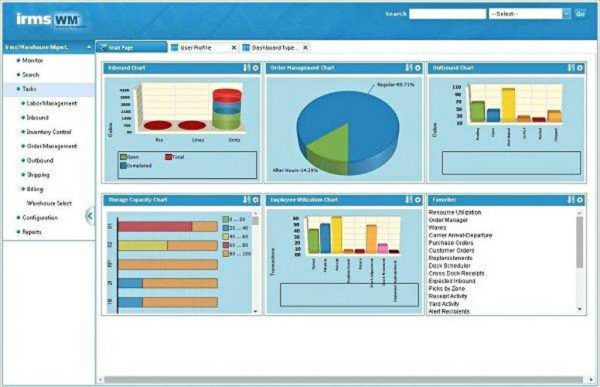
Available on all types of mobile devices including Windows, Android, and iOS systems, IRMS360 integrates seamlessly with a number of MRP, CRM, ERP, and accounting systems. Meanwhile, its extended functionality offers 3rd-party billing, yard and transportation management, demand planning, and labor management.
Whether you are operating in the healthcare, food and drink, wholesale distribution, automotive, metals, publishing, or 3PL warehouse sector, IRMS360 will simplify your processes and improve the service you provide for your customers.
Pros
Cons
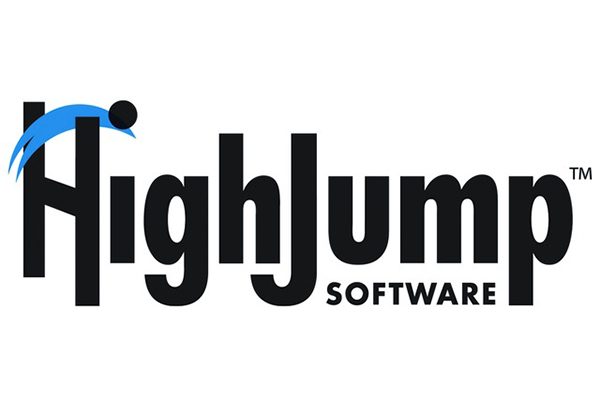
If you need an agile WMS solution to make your supply chain even more dynamic, HighJump could be the optimal warehouse inventory management software for you.
Designed to boost productivity while reducing operational costs, HighJump uses cutting-edge technology to reduce order turnaround windows while maximizing capacity and throughout. This robust program affords numerous capabilities to enable advanced users to really harness the full potential of this system.
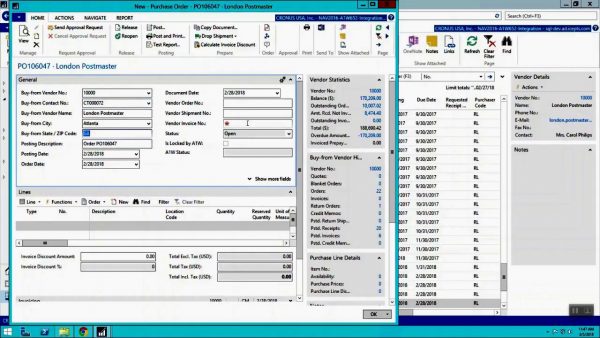
With its intuitive, modern user interface, HighJump is a great solution to automate your warehouses while increasing productivity exponentially.
Thanks to its ability to integrate seamlessly with major ERP publishers, HighJump gives you impressive functionality and versatility. Even better, HighJump can also provide customized integration for custom-built and legacy ERP systems for greater convenience and compatibility.
Pros
Cons

If you’re running a small or medium-sized distribution or wholesale enterprise, Blue Link ERP is the ideal all-in-one solution for you.
Thanks to its fully integrated system, it provides complete user-friendly functionality that allows you to effortlessly manage accounting, inventory, order processing, and entry, as well as warehouse management. With its easily navigable interface, Blue Link ERP offers simple access and excellent readability.
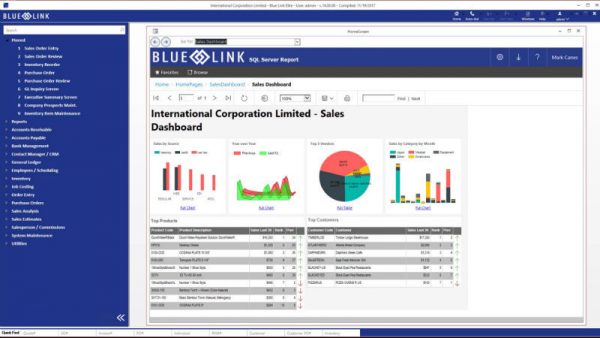
An excellent feature that Blue Link ERP can offer is its ability to integrate with barcode scanners, tablets, and common carriers. As an added advantage, this software boasts a free demonstration so you can determine whether it’s the right choice for you before purchasing.
Finally, Blue Link ERP excels in its onboarding process since it provides training, support, implementation, and in-person consulting all delivered by its in-house expert team.
Pros
Cons

If you’re looking for one of the most advanced supply management solutions on the market today, Manhattan may be the right choice for you.
Harnessing the power of machine learning and the latest AI innovations, Manhattan represents an effective system to manage your warehouse inventory. Designed to optimize throughput and fulfillment for both WAVELESS and WAVE orders in just one platform, Manhattan is a streamlined and efficient piece of software.
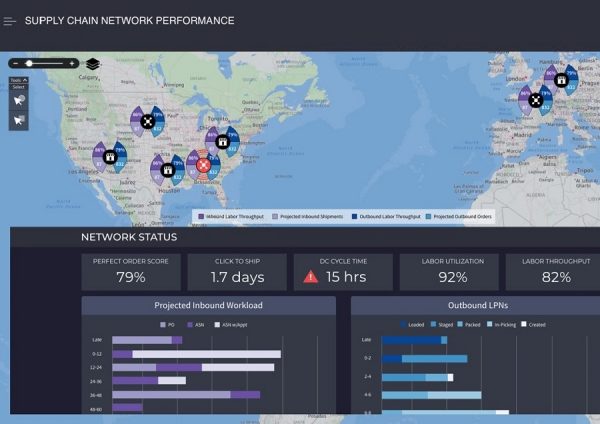
When you need to streamline shipping and receiving in order to expedite your back-ordered products and facilitate cross-docking, Manhattan can offer you that functionality. Meanwhile, its user environment is simple to get to grips with.
One further advantage is Manhattan’s dedicated WMS team which writes scripting from the SQL server.
Pros
Cons
There are several types of warehouse management software, so how do you choose which one is right for you? There are many facets involved in warehouse management from transportation and inventory management to managing the supply chain.
Yet, while dealing with all of these aspects can be challenging, warehouse management software provides a catch-all solution that resolves all your problems. However, it’s imperative to choose the correct solution for you.
Since all warehouse management systems have something different to offer, it’s important to be aware of their capabilities and features so that you can determine whether they meet your requirements.
With this in mind, here are some key features that you need to consider when choosing the best warehouse inventory management system for your business.
Warehouse management systems are digital tools that have been designed to control, optimize, and support warehouse workflow. Usually, the processes include everything from inventory accuracy and management, shipping, picking, auditing, fulfillment, and a lot more.
Warehouse management systems have become so popular in recent years that the industry is set to be worth $6.1 billion by 2026, and the trend is still growing year on year.
Recent research has shown that 62% of companies lack visibility in their supply chain, so perhaps you are running one of those organizations that already have warehouse management solutions in place, but they simply aren’t getting the job done to a high enough standard for your needs? Or perhaps you’re ready to implement your first system to streamline your warehouse processes. Either way, you’ll find the information you’re seeking right here.
Inventory Management vs Warehouse Management
Inventory management and warehouse management modules may often be found combined in the same software package, but they may also be purchased as standalone options.
Although inventory management and warehouse management may seem to be the same thing, there are some key differences. Warehouse management involves handling inventory along with other related tasks in your warehouse. Meanwhile, inventory management involves dealing with stock management for the entire business as well as forecasting the most up-to-date business trends.
Both warehouse management and inventory management help in the movement of inventory to the end consumer from the supplier in an effective and efficient manner. Both also involve the storage, shipping, and reordering of stock, and both provide greater visibility into stock, using RFID, barcode tools, and software to improve accuracy and efficiency.
Benefits Of Warehouse Management System
There are many benefits that come with using warehouse management software, including lower operational expenses and reduced labor costs, improved tracking of inventory, fast replenish and low stock warehousing inventory capabilities, better security practices, improved billing management, inbound and outbound control, CRM, and a lot more.
A business’s success and profitability can dramatically be increased with the impletion of the right Warehouse Management Software.
Warehouse management software boasts a number of commonly seen features. These include:
Businesses of all types and sizes within the distribution center and warehousing sector can benefit from using warehouse management software. The key to success lies in choosing the right type of software to suit your company type.
Different types of software are suited to different sizes of businesses. Therefore, you need to do your research well and select a system that is designed to work best with your requirements, whether you are running a small, medium-sized, or large-scale company.
If your business adopts warehouse management software, it can reap a number of competitive advantages over its rivals. For example:
Some of the most up-to-date warehouse management software trends for this year include:
There is no single price tag for warehouse management software. The cost very much depends on which software you choose, the size of your business, the features you require, and a number of other considerations. While there are some free options, in most cases to get the functionality you require to make a significant difference to your warehousing operation you’ll need to pay a fee. Some companies providing WMS solutions offer monthly pricing plans at varying prices depending on scalability. Others offer one-off or annual fee structures. You can expect to pay several hundred dollars per user per month for a high-quality system.
Some key questions that you should be asking vendors when you’re evaluating any kind of warehouse management software include:
Implementing warehouse management systems can be a process fraught with potential pitfalls, so it’s important to learn some lessons from companies that have already jumped through those hoops. Here are some that you should take on board:
As you can see, implementing high-quality warehouse inventory management software is crucial if you want your distribution or warehousing business to be successful and competitive. However, it’s imperative to choose the correct software solution to suit your business’s needs.
We have analyzed all the options, and we believe that NetSuite is the best WMS option for your company at the present time. As a single solution that meets all your needs, this software is efficient, effective, and convenient, making it the perfect choice for any business.
Frequently Asked Questions About Warehouse Inventory Management Software
jQuery(document).ready(function() {
jQuery(‘.accordionButton’).click(function() {
jQuery(‘.accordionButton’).removeClass(‘on’);
jQuery(‘.accordionContent’).slideUp(‘normal’);
if(jQuery(this).next().is(‘:hidden’) == true) {
jQuery(this).addClass(‘on’);
jQuery(this).next().slideDown(‘normal’);
}
});
});
What Can Warehouse Management Systems Offer?
A whole host of features can be found within warehouse management systems. When you take advantage of the software on offer, your business will benefit from: intelligent inventory tracking data, better warehouse design, optimized packing and picking, faster receiving and put-away, smart shipping, enhanced labor management, effective dock and yard management, accurate reporting.
What Is Warehouse Management Software?
Warehouse management systems are digital tools that have been designed to control, optimize, and support warehouse workflow. Usually, the processes include everything from inventory accuracy and management, shipping, picking, auditing, fulfillment, and a lot more.
What Is Warehouse Management?
Warehouse management involves managing processes, operations, and people, completely synchronizing all insights and processes in the value chain in order to maximize functionality.
What Are The 6 Areas Covered By The WMS?
- Receiving – this involves verification that the right products have been received in the appropriate time, condition, and quality.
- Put-away – this involves the transportation of incoming merchandise to its final storage spot in an efficient way so that products can be rapidly and safely accessed.
- Storage – this involves the storing of products appropriately within the warehouse environment in order to maximize available space and increase labor efficiency.
- Picking – this involves the gathering of products from the warehouse to meet the consumers’ orders in a streamlined and accurate manner.
- Packing – this involves the combination and preparation of the picked products in sales orders to be shipped to consumers.
- Shipment – this involves the delivery of products to consumers’ homes in a streamlined manner with product flows well-traced and effectively verified.
How Many Types Of WMS Are There?
There are four types of WMS:
- The standalone WMS – these standalone systems offer features to improve the efficiency of warehouse operations on a daily basis. These systems can be used to control and monitor the supply chain from end to end.
- WMS modules in software designed to manage the supply chain. Systems that integrate both types of software in a single package can manage all the essential activities that are required for the creation and delivery of a product. This involves inventory management, logistics, and transportation. WMS modules focus on warehouse operations within that overarching system.
- WMS modules in ERP systems. A lot of ERP systems integrate some warehouse management capabilities although they often lack the functionality as standalone systems.
- Cloud-Based WMS. Modern cloud-based WMS systems are becoming increasingly common due to the greater need for remote access. These systems offer access for any authorized team member at any time and in any place, from any type of device.
What Is The Best Warehouse Management Software?
The best warehouse management software is NetSuite. This solution is a convenient one-stop shop for all your needs, whatever the size or type of your business.
Sources:
- Markets and Markets – Warehouse Management System Market Report
- Finances Online – Supply Chain Statistics
- 3PL Central – 3PLs vs 4PLs vs 5PLs: What’s the Difference?
A whole host of features can be found within warehouse management systems. When you take advantage of the software on offer, your business will benefit from: intelligent inventory tracking data, better warehouse design, optimized packing and picking, faster receiving and put-away, smart shipping, enhanced labor management, effective dock and yard management, accurate reporting.
Warehouse management systems are digital tools that have been designed to control, optimize, and support warehouse workflow. Usually, the processes include everything from inventory accuracy and management, shipping, picking, auditing, fulfillment, and a lot more.
Warehouse management involves managing processes, operations, and people, completely synchronizing all insights and processes in the value chain in order to maximize functionality.
- Receiving – this involves verification that the right products have been received in the appropriate time, condition, and quality.
- Put-away – this involves the transportation of incoming merchandise to its final storage spot in an efficient way so that products can be rapidly and safely accessed.
- Storage – this involves the storing of products appropriately within the warehouse environment in order to maximize available space and increase labor efficiency.
- Picking – this involves the gathering of products from the warehouse to meet the consumers’ orders in a streamlined and accurate manner.
- Packing – this involves the combination and preparation of the picked products in sales orders to be shipped to consumers.
- Shipment – this involves the delivery of products to consumers’ homes in a streamlined manner with product flows well-traced and effectively verified.
There are four types of WMS:
The best warehouse management software is NetSuite. This solution is a convenient one-stop shop for all your needs, whatever the size or type of your business.
This article was written for Business 2 Community by Scott Anfield.
Learn how to publish your content on B2C
View full profile ›
Join over 100,000 of your peers and receive our weekly newsletter which features the top trends, news and expert analysis to help keep you ahead of the curve.







